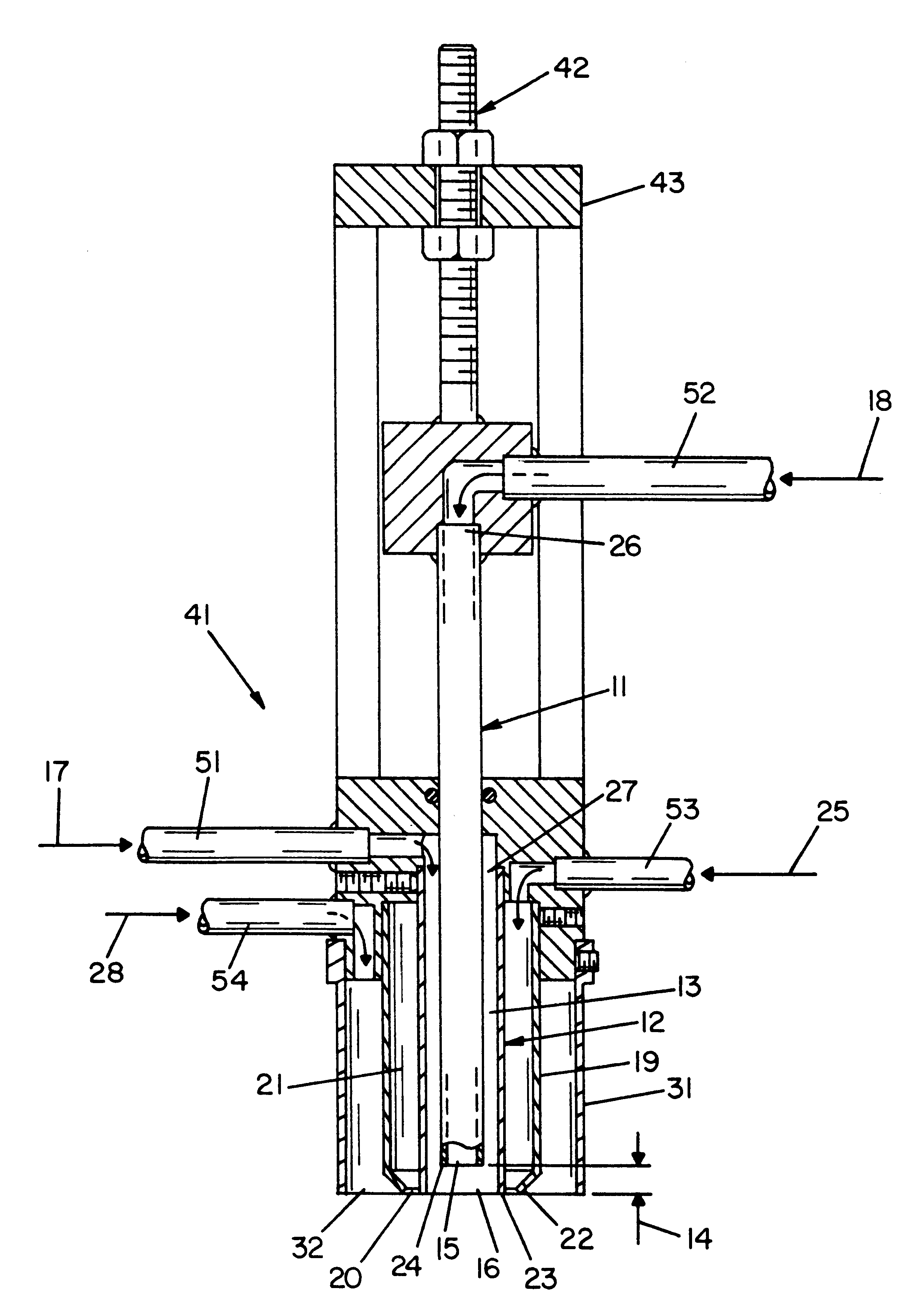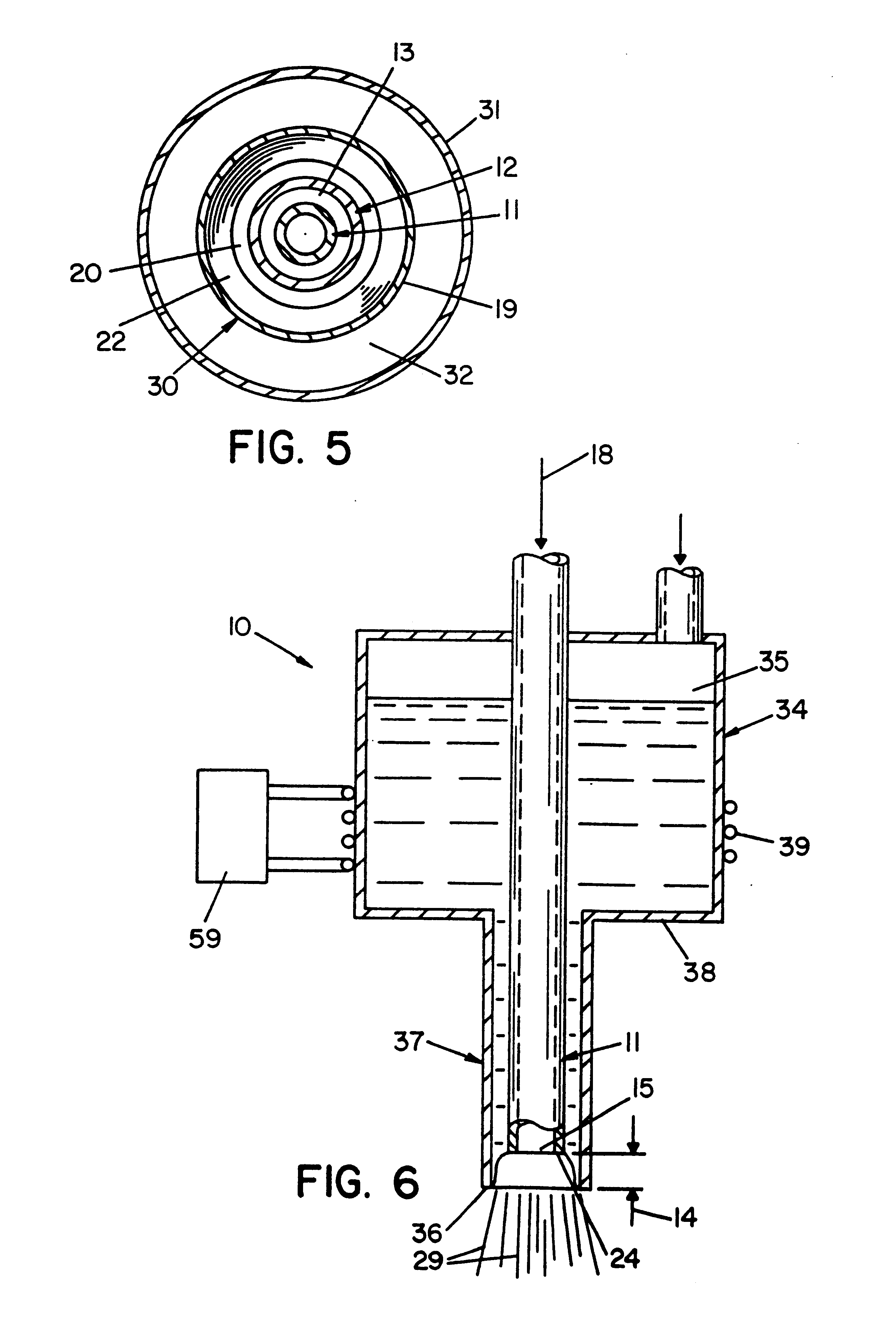Process and apparatus for the production of nanofibers
- Summary
- Abstract
- Description
- Claims
- Application Information
AI Technical Summary
Benefits of technology
Problems solved by technology
Method used
Image
Examples
Embodiment Construction
It has now been found that nanofibers can be produced by using pressurized gas. This is generally accomplished by a process wherein the mechanical forces supplied by an expanding gas jet create nanofibers from a fluid that flows through a nozzle. This process may be referred to as nanofibers by gas jet (NGJ). NGJ is a broadly applicable process that produces nanofibers from any spinnable fluid or fiber-forming material.
In general, a spinnable fluid or fiber-forming material is any fluid or material that can be mechanically formed into a cylinder or other long shapes by stretching and then solidifying the liquid or material. This solidification can occur by, for example, cooling, chemical reaction, coalescence, or removal of a solvent. Examples of spinnable fluids include molten pitch, polymer solutions, polymer melts, polymers that are precursors to ceramics, and molten glassy materials. Some preferred polymers include nylon, fluoropolymers, polyolefins, polyimides, polyesters, and ...
PUM
| Property | Measurement | Unit |
|---|---|---|
| Pressure | aaaaa | aaaaa |
| Pressure | aaaaa | aaaaa |
| Pressure | aaaaa | aaaaa |
Abstract
Description
Claims
Application Information
 Login to View More
Login to View More - R&D
- Intellectual Property
- Life Sciences
- Materials
- Tech Scout
- Unparalleled Data Quality
- Higher Quality Content
- 60% Fewer Hallucinations
Browse by: Latest US Patents, China's latest patents, Technical Efficacy Thesaurus, Application Domain, Technology Topic, Popular Technical Reports.
© 2025 PatSnap. All rights reserved.Legal|Privacy policy|Modern Slavery Act Transparency Statement|Sitemap|About US| Contact US: help@patsnap.com



